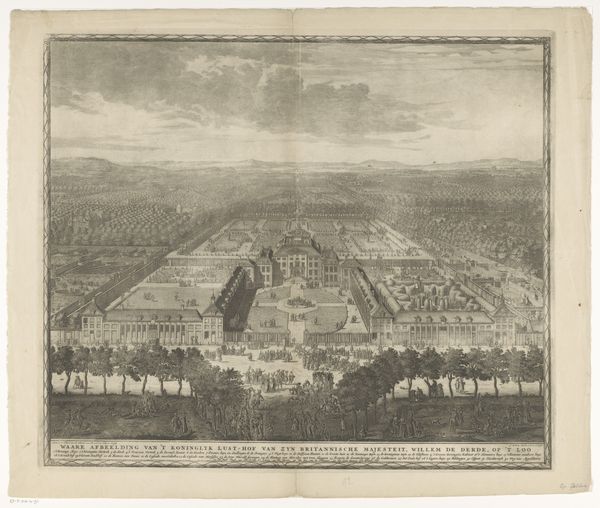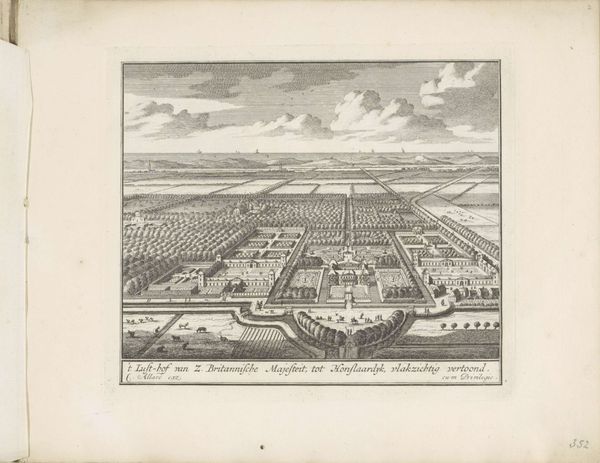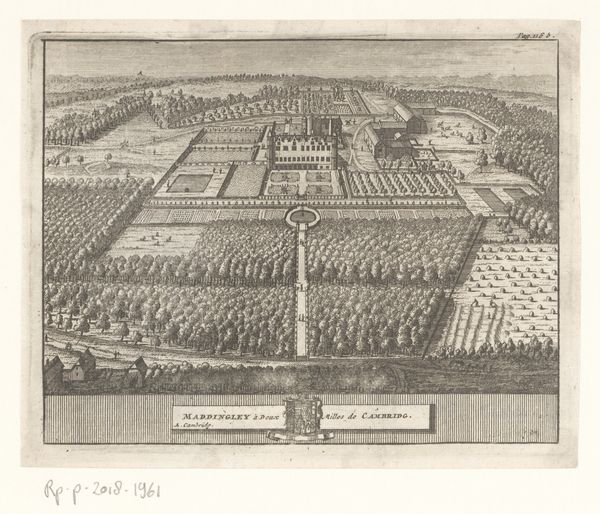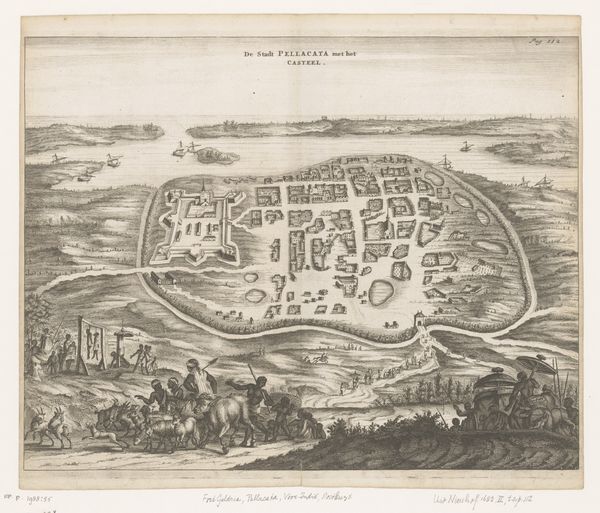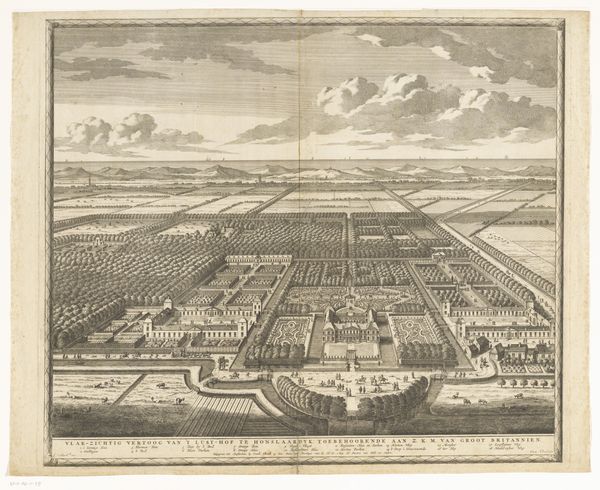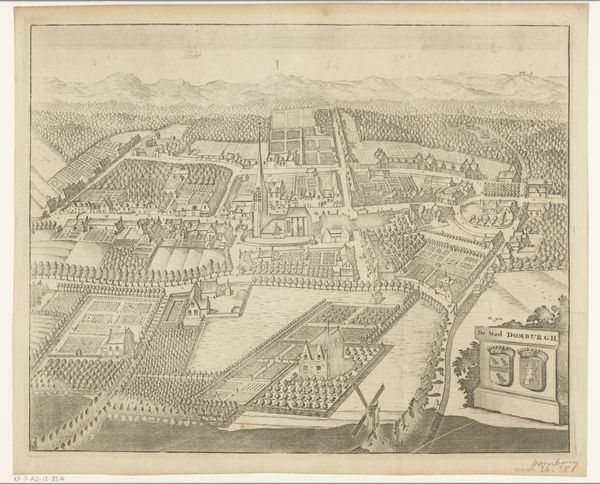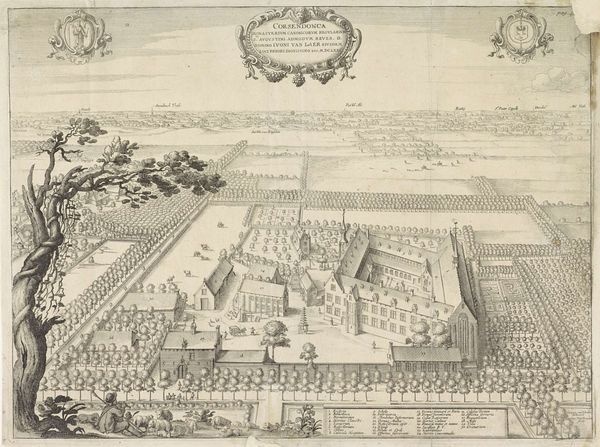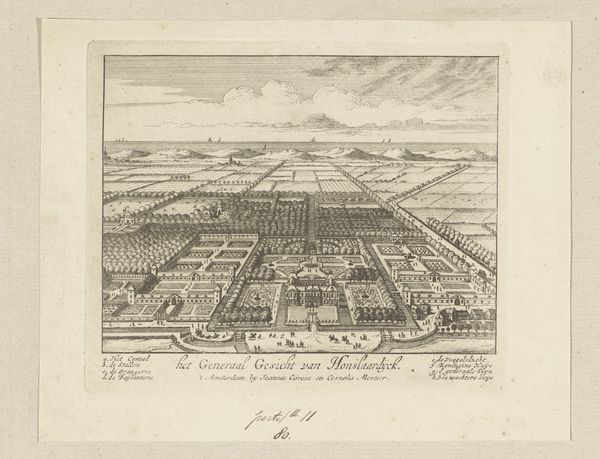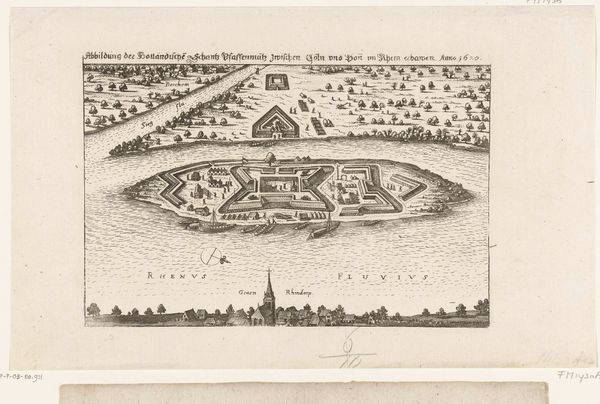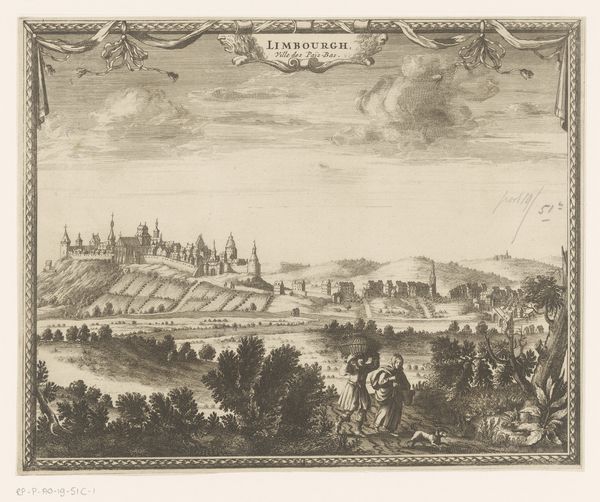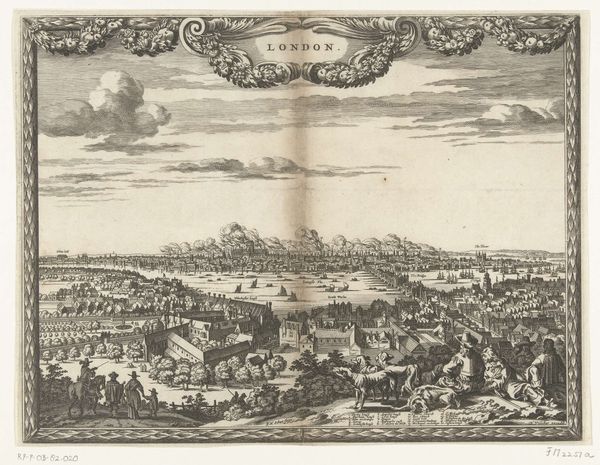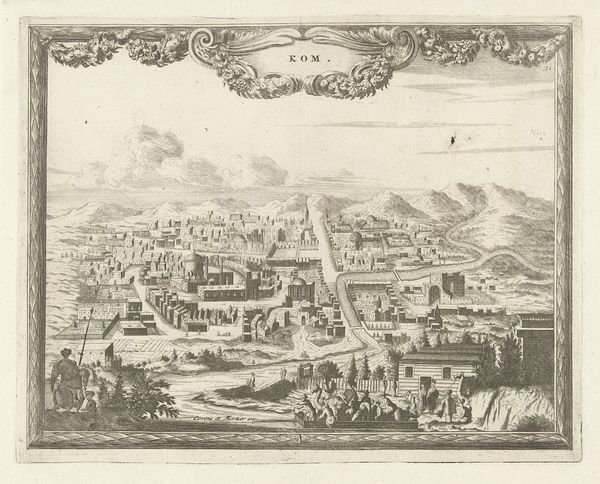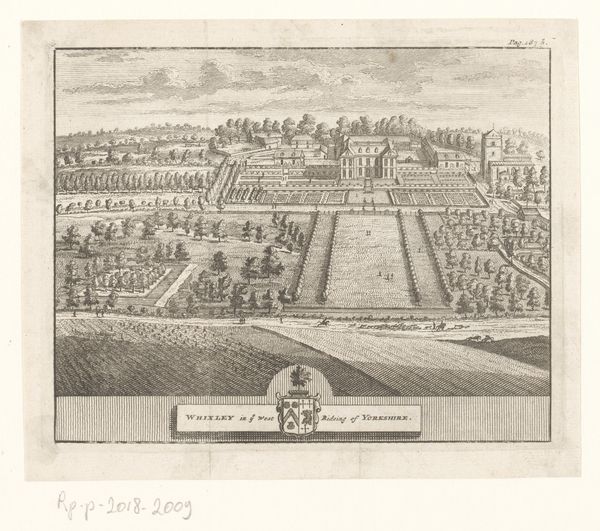
print, engraving
#
african-art
#
baroque
#
dutch-golden-age
# print
#
old engraving style
#
landscape
#
cityscape
#
engraving
Dimensions: height 224 mm, width 284 mm
Copyright: Rijks Museum: Open Domain
Editor: So this print, "Gezicht op Louango in vogelvlucht," from sometime between 1685 and 1714 by Thomas Doesburgh, depicts a bird's-eye view of a city. It feels so…deliberately planned and presented, yet the scene in the foreground appears to depict active movement and a struggle. What's your interpretation of how the overall cultural context affects its perception? Curator: The engraving’s creation falls squarely within the Dutch Golden Age, a period of immense economic and colonial expansion. We need to consider this “view” not just as a landscape, but as a tool. Maps and cityscapes were actively used to demonstrate and reinforce Dutch power, particularly regarding trade and colonial ambitions in Africa. How do you think the choice to represent Louango from a bird’s-eye view influences the viewer? Editor: It feels like a declaration of ownership or at least surveillance. Like, "We see it all, we know what’s going on here." It definitely highlights control and power. But why the emphasis on the figures at the front? Curator: Exactly! The bird's eye gives power, right? The foreground, while detailed, acts almost like a stage. Those figures engaged in what seems like some kind of conflict, along with the indigenous settlements portrayed systematically, are being placed under Dutch observation, fitting neatly into their commercial goals. What about the elaborate baroque border, does that seem out of place in your mind? Editor: It does seem a little…grand for what I would expect to see in a "documentary" print. Was it also trying to imply nobility, that this place was significant and wealthy, worthy of such embellishment? Curator: Precisely. The baroque style would associate Louango with established European cities and trade centers. That combination really speaks to how the Dutch projected their values and ambitions onto the African continent through these prints. So, what do you think? Does this view reinforce the perception and reception of the artwork? Editor: Absolutely. Seeing it this way, it becomes less about simple representation and more about power dynamics. I hadn't considered the ways the Golden Age influenced these landscape prints. Curator: And how imagery acts as a carrier and tool to promote public engagement and confirm established policies. The true subject of the engraving may not be the city itself, but its subjugation to Dutch desires.
Comments
No comments
Be the first to comment and join the conversation on the ultimate creative platform.
